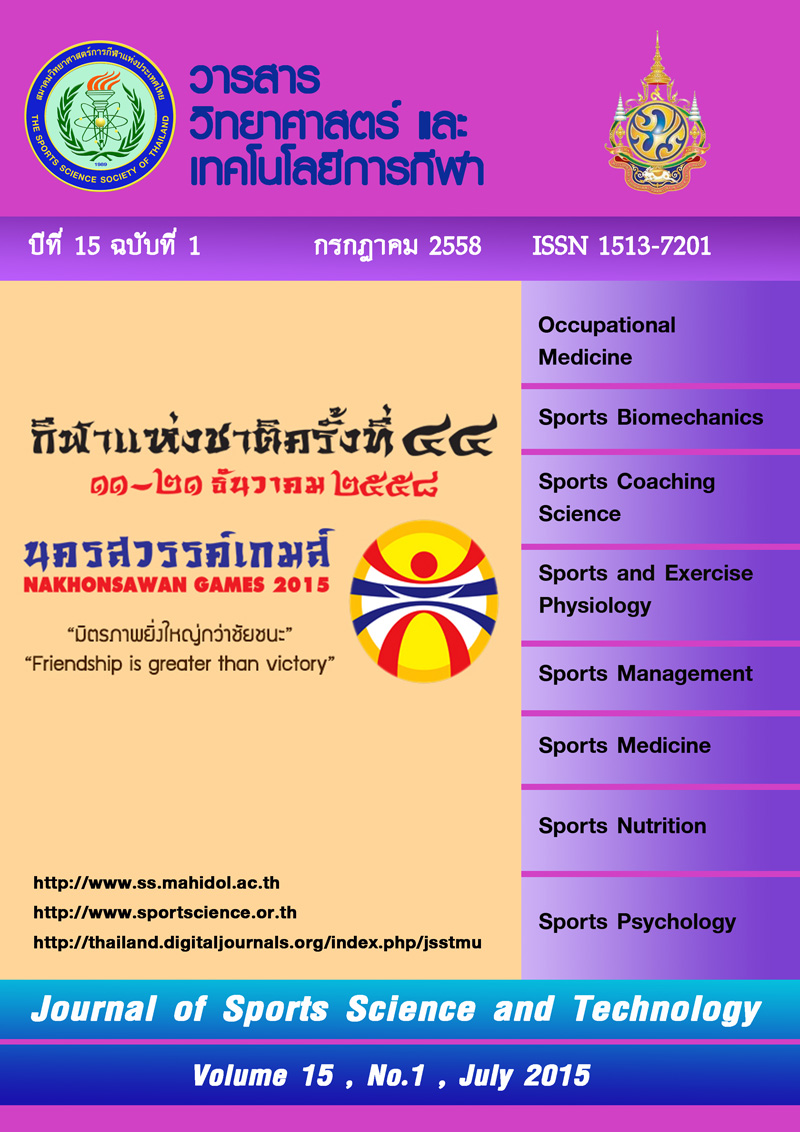SPORTS BRA MIGHT POSSIBLY AFFECT CARDIOVASCULAR FUNCTION IN ACTIVE WOMEN
Keywords:
sports bra, cardiovascular functions, exerciseAbstract
The aim of this study was to investigate the effect of sports bra on cardiovascular functions at rest, during and after exercise. Thirteen young habitual active females volunteered to complete 3 randomized running trials with different bra conditions of no bra (NB), casual bra (CB) and sports bra (SB) on a motor-drive treadmill at constant speed of 6.5 km/h, 0% grade up to 60, 70 and 80% of age-predicted maximal heart rate (MHR). Continuous cardiovascular variables, including heart rate (HR), stroke volume (SV), cardiac output (CO), cardiac index (CI), End-Diastolic Volume (EDV), ejection fraction (EF), Systemic Vascular Resistance (SVR), Blood Pressure (BP), Blood Perfusion (BPF), were collected at rest, during and after exercise. Results showed that all resting cardiac variables were not significantly different between groups. As exercise was started, all three conditions showed patterns of significant increasing in heart rates (HR), stroke volume (SV), cardiac output (CO) and cardiac index (CI) from its corresponding resting values (p<0.05). For within group comparisons, while SVR showed reduction at the beginning of exercise, EDV in SB and EF in NB and SB showed no significant differences from initial resting values. Between group comparisons during exercise showed no significant differences of most of the variables with the exception of differences of SV (p<0.05) and CO (p<0.05) between SB and CB at 60%MHR. No significant differences of other variables were detected at any intensity. During recovery period, there were immediate declined, compared between 80%MHR and 1st min, in HR in all groups (p<0.05), SV in CB (p<0.05), CO and CI in NB (p<0.05) and CB (p<0.05) (Figure1A, 1B, 1C and 1D). There was reduction in EDV in CB (p<0.05). During recovery period, when compared to resting values, SV and EDV in all groups had no significant difference; HR, CI and CO showed significant difference throughout 5 min period (p<0.05). When compared between resting values and 1st min of recovery, EF in all groups showed significant difference (p<0.05); SVR had significant increased in all groups (p<0.05); SBP in all groups showed significant difference only in NB group (p<0.05); DBP in NB and CB showed significant difference (p<0.05); blood perfusion outside strap in all groups showed no significant differences (p<0.05) and lastly blood perfusion inside strap in all groups showed significant differences only in CB (p<0.05). In conclusion, both central and peripheral cardiac functions including rate and contractility, systolic and diastolic blood pressures and total vascular resistance exhibit similarly as when subjects were in no bra or casual bra. Thus, it is recommended from this study that sports bra can be used safely with no cardiovascular limitations.
(Journal of Sports Science and Technology 2015;15(1): 99-108 )






